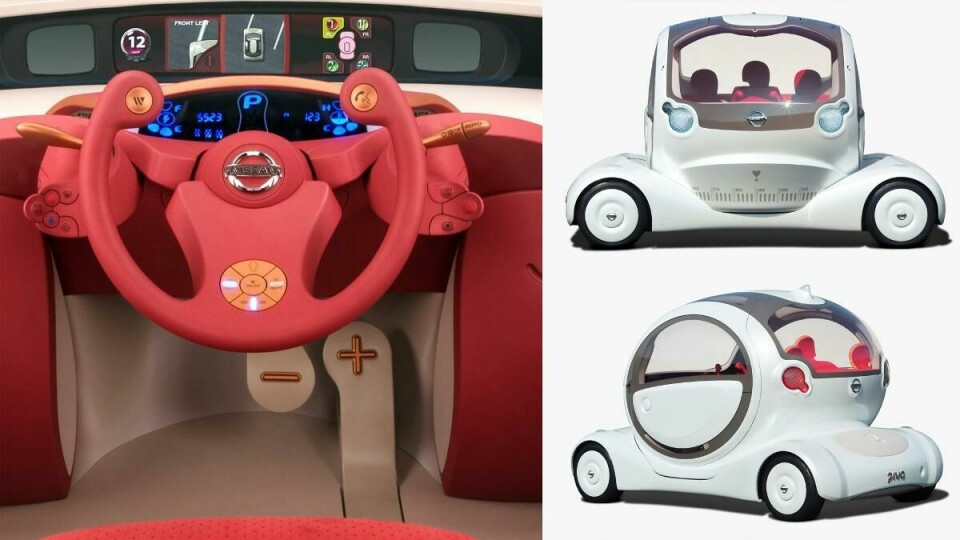
Interior trends: Pedal power
We trace an interior design detail theme under-foot
Volkswagen’s I.D. Buzz electric microbus was a crowd pleaser at this year’s Detroit show, combining strong retro references with product-design shapes and surfaces, plus the odd whimsical flourish. Among the interesting details was a pair of metallic pedals labelled with body-colour ‘pause’ and ‘play’ symbols – borrowing the stylised iconography more typically found among video and audio controls.
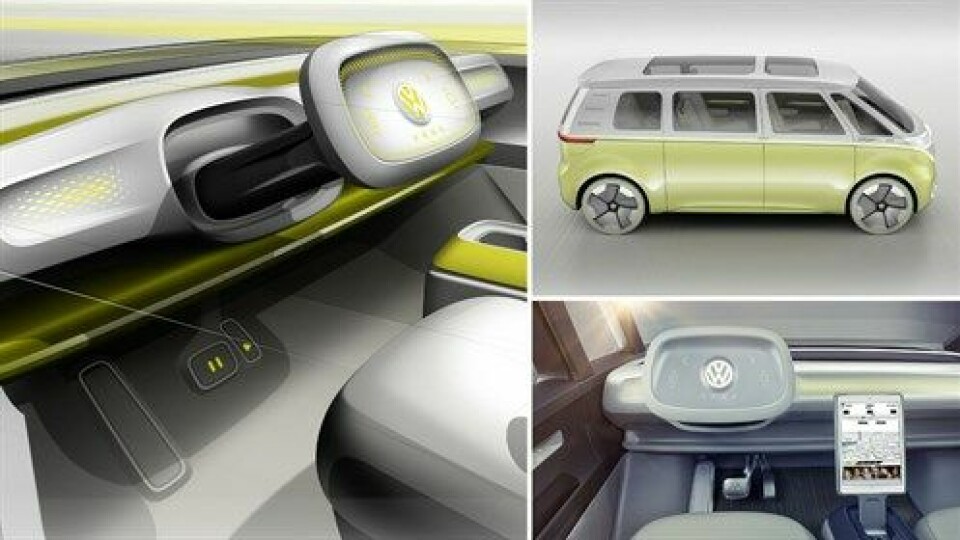
Volkswagen I.D. Buzz (2017)
Pedals are important tactile touchpoints so naturally they deserve design attention, even if production versions tend toward the prosaic. However the I.D. Buzz is not the first concept to borrow labels from elsewhere. It joins a lengthening line of cars that have placed visual labels under the driver’s toes.
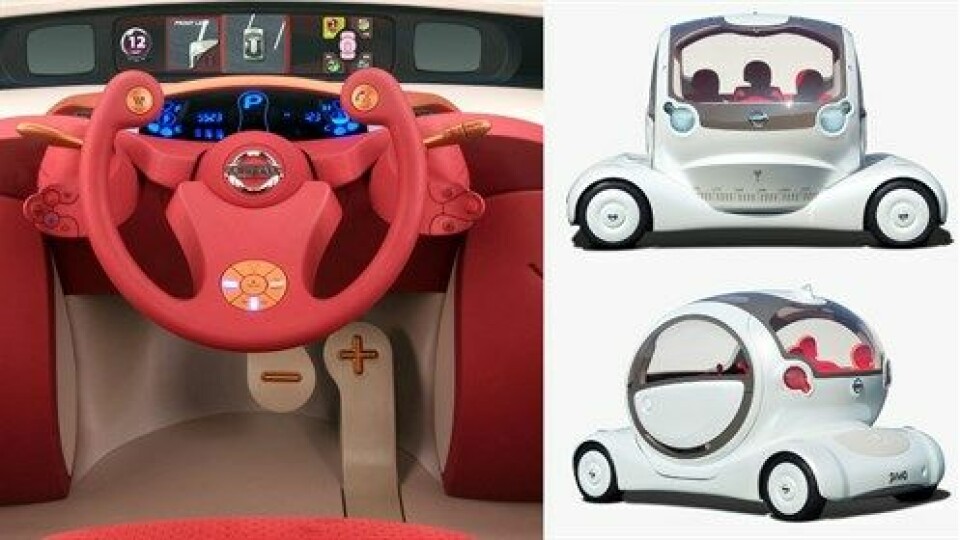
Nissan Pivo (2005)
There are probably earlier examples, but it’s no surprise to recall that visual pedal designs were pioneered by the 2005 Nissan Pivo, a remarkable concept that reinvented the car by abolishing the tiresome task of reversing. Instead, a rotating passenger pod sat in the centre of a symmetrical electric skateboard like an egg resting in a nest. Inside the cabin, silver brake and throttle pedals shaped like telephone receivers were labelled with copper-coloured ‘plus’ and ‘minus’ symbols.
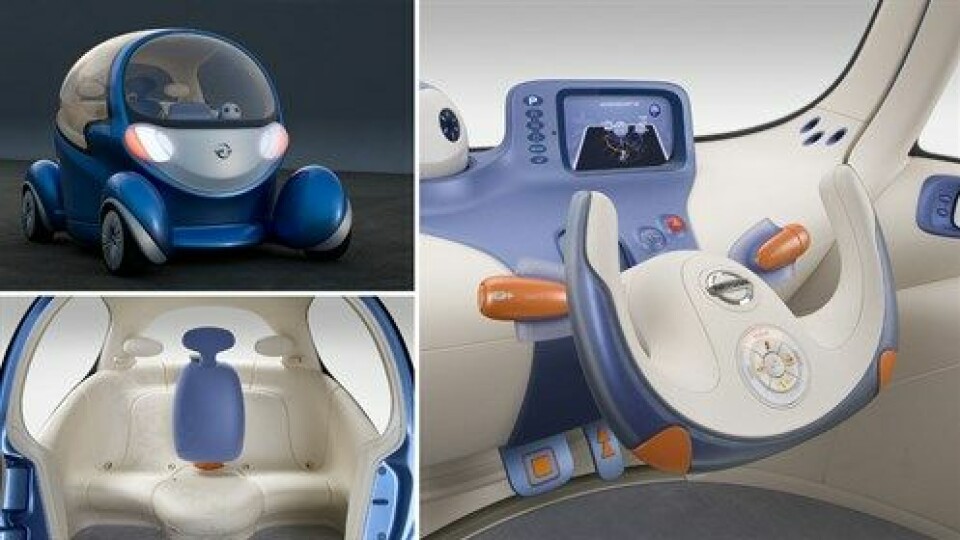
Nissan Pivo 2 (2007)
Nissan’s thoughts evolved with the 2007 Pivo 2, which added wheels that could crab sideways and a cartoonish grin. The toy-like interior included pedals labelled with ‘fast-forward’ and ‘stop’ symbols. Nissan’s selections from the video player deck suggests a much more abrupt and sporty demeanour than VW’s ‘pause’ and ‘play’ – an odd signal, given the Pivo’s family-friendly vibe.
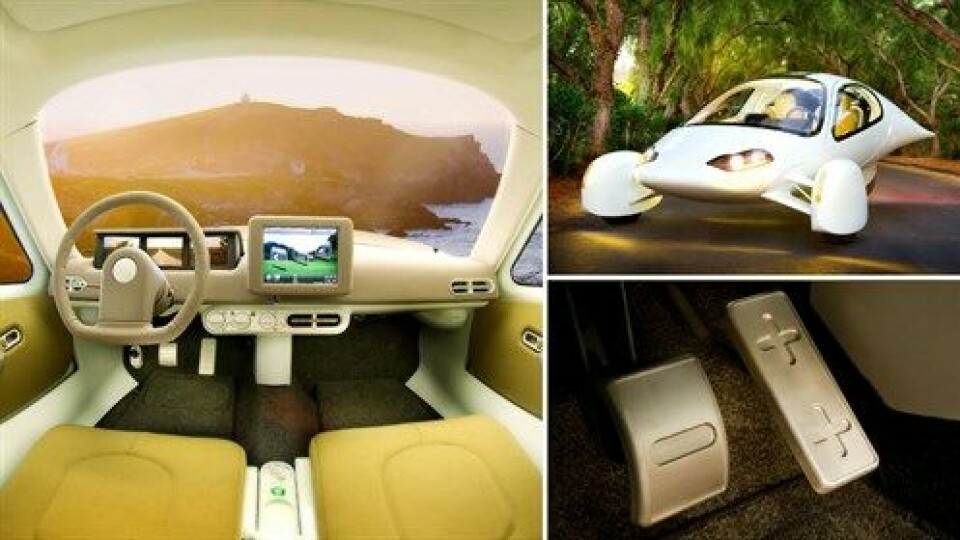
Aptera Typ-1 (2007)
Also in 2007, the first prototype Aptera Typ-1 electric three-wheeler debuted, featuring bulky ‘plus’ and ‘minus’ pedals cast in alloy. Later pre-production cabins featured a more conventional footwell, before the company sadly folded in 2011.
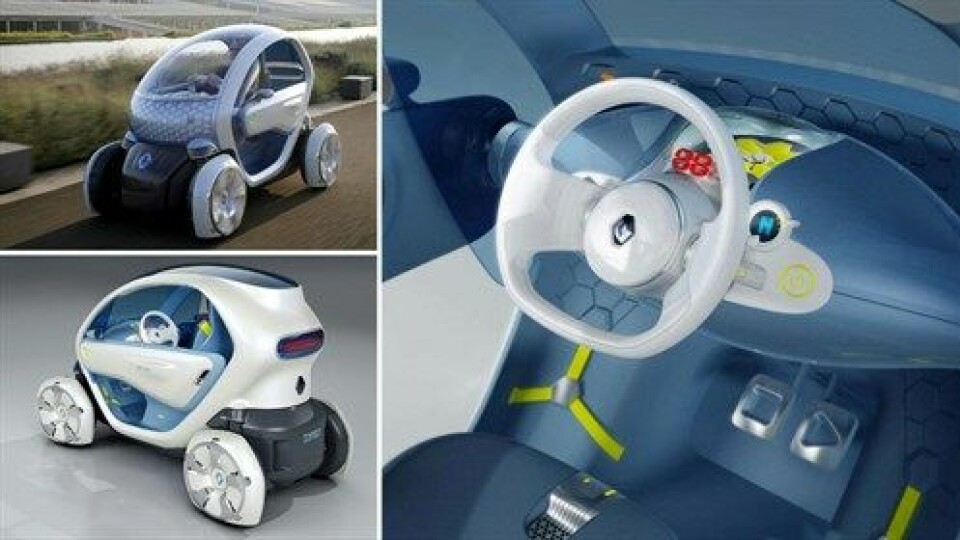
Renault Twizy ZE (2009)
Renault chose the 2009 Frankfurt show to reveal its Twizy ZE concept, complete with brushed alloy pedals with ‘stop’ and ‘play’ cut-outs. Again, when production examples of the innovative urban EV arrived in 2012 the pedals wore more simple ribbed covers.
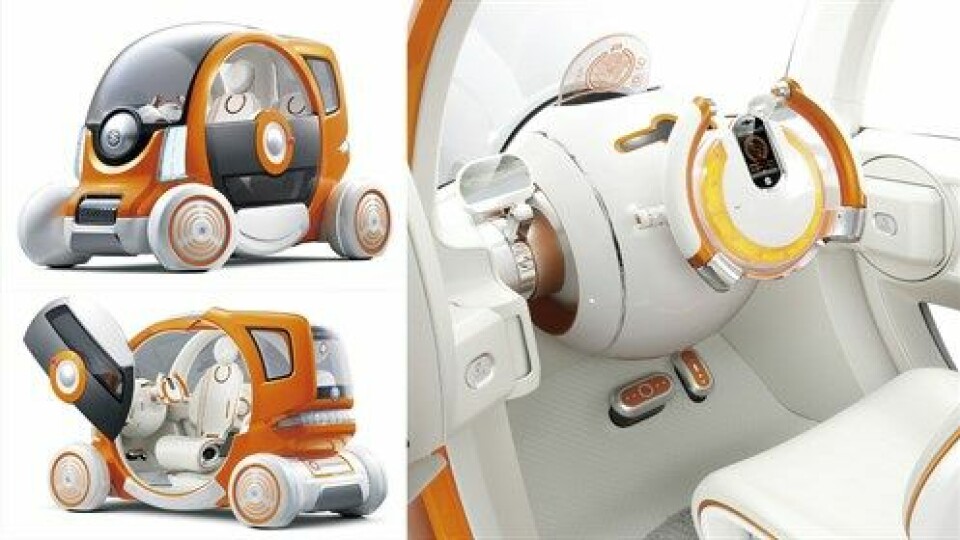
Suzuki Q (2011)
A rash of Twizy rivals popped up over the following few years, including the Suzuki Q concept displayed at the Tokyo motor show in 2011. The Q’s many delightful details included pedals labelled with a circle and a line. Easily overlooked within a cabin stuffed with circular motifs, these appear to be an entirely appropriate application of the international power symbols for ‘on’ and ‘off’ – simplified glyphs representing 0 and 1.
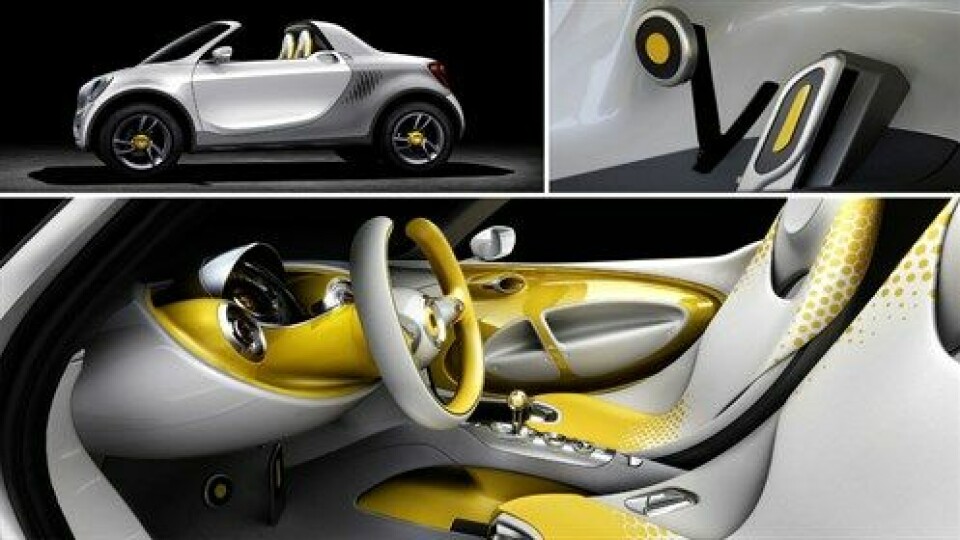
Smart For-Us (2012)
Another example of 0-1 labelling appeared at the 2012 Detroit show, inside the Smart For-Us concept pick-up (which reappeared later the same year in Paris as the ForStars coupé). Rounded and linear forms are not unusual for brake and throttle pedals, but in this pair of Smart concepts the on-off reference does appear to be explicit.
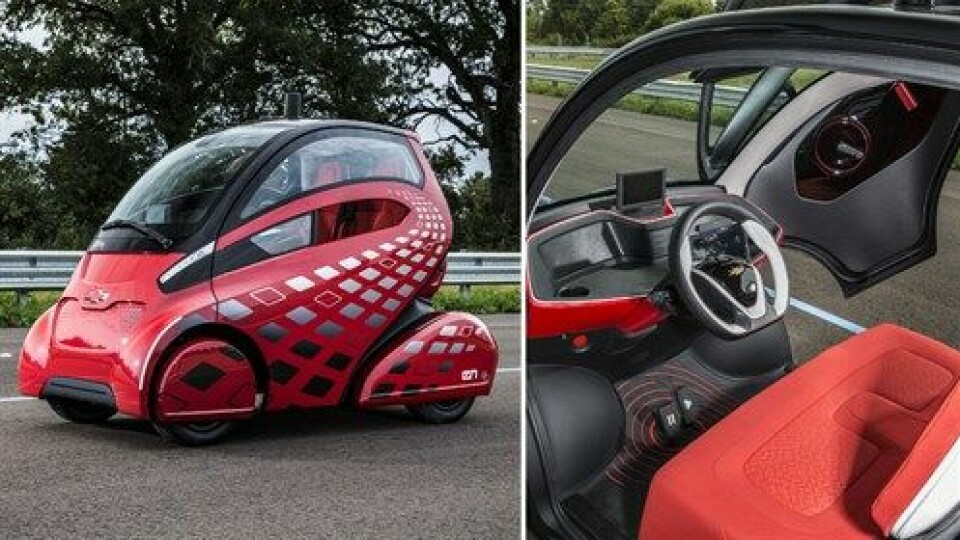
Chevrolet EN-V 2 (2014)
General Motors’ two-wheeled EN-V prototypes evolved from the PUMA project begun by self-balancing pioneer Segway in 2009. With motion controlled by weight-shifting, there was initially no need for a throttle or brake, but by the time Chevrolet’s EN-V 2.0 appeared in 2014 there were four wheels and a shift in emphasis to autonomy over urban manoeuvrability. Centrally positioned controls included high-contrast ‘pause’ and ‘play’ pedals.
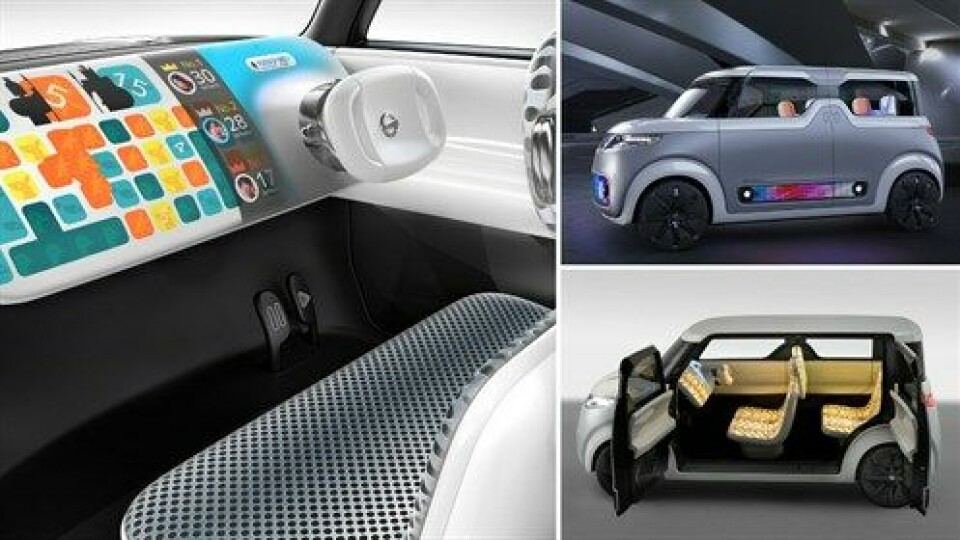
Nissan Teatro for Dayz (2015)
‘Pause’ and ‘play’ appeared again at the 2015 Tokyo show, on the pedals of Nissan’s arresting Teatro for Dayz concept, a born-digital vehicle featuring internal projectors to mimic the kind of large, flexible digital displays that will no doubt soon appear for real.
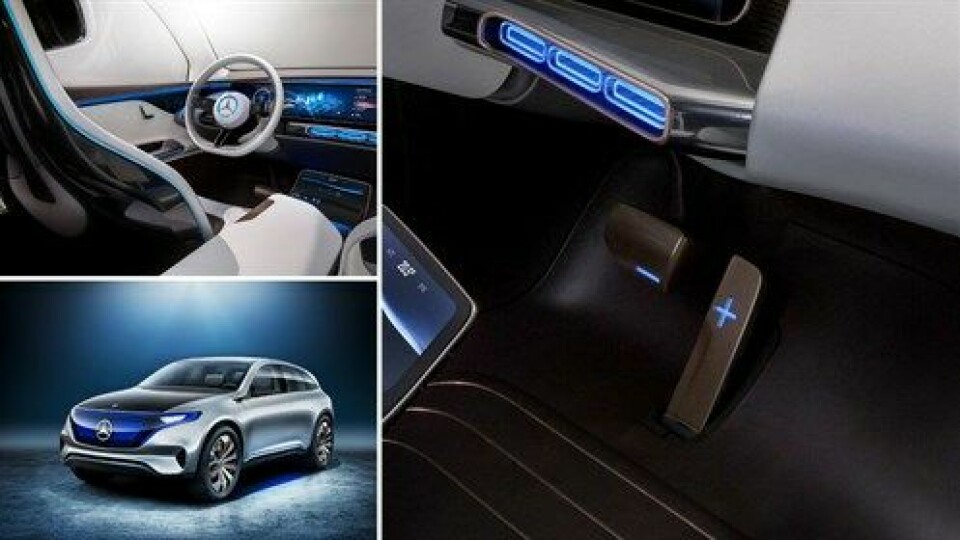
Mercedes-Benz Generation EQ (2016)
The pause-play combination hasn’t yet cemented its hold over the footwell, however: the Generation EQ concept revealed by Mercedes-Benz at the 2016 Paris show returned to the ‘plus’ and ‘minus’ theme. This time, however, the pedals conformed to the now-prevailing language of EV design, the symbols appearing in bright, illuminated blue.
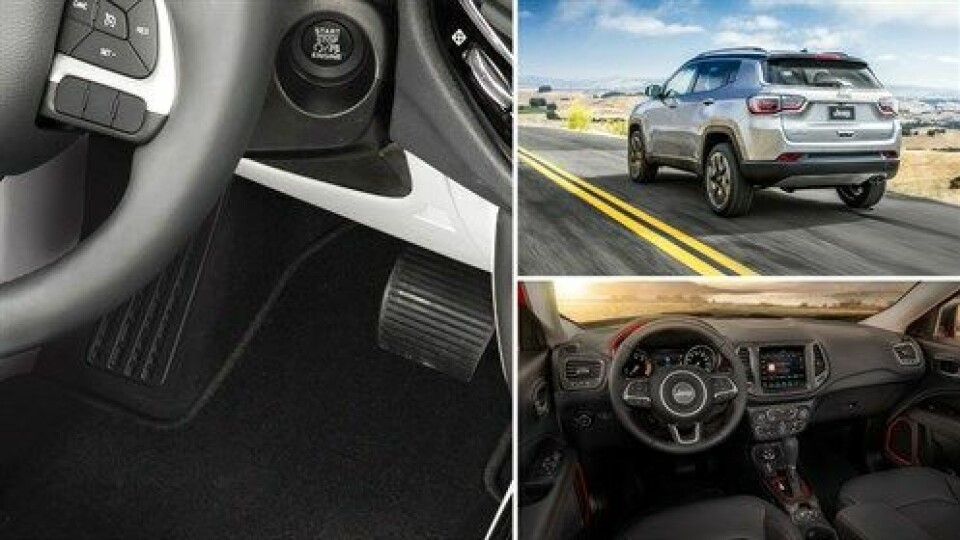
Jeep Compass (2017)
Of course, it’s typical to see charming, witty or clever little details swept away in the transition to production reality. However, it’s refreshing to cite a last example that has made the journey to the showroom floor. Though the 2017 Jeep Compass may have fairly humdrum pedals, the footrest to their left [look closely] includes a hidden message for the sharp-eyed: moulded into the grippy rubber surface are a series of dots and dashes that apparently spell out ‘mud’, ‘rocks’ and ‘snow’ in Morse code.



